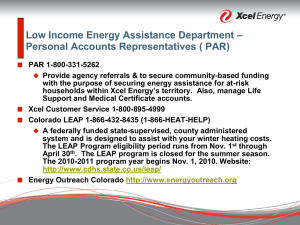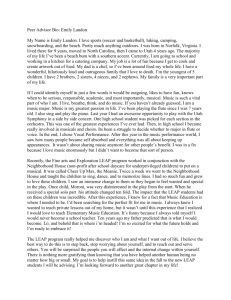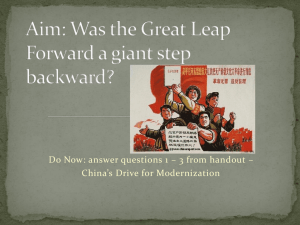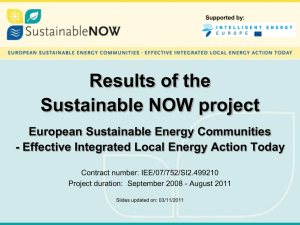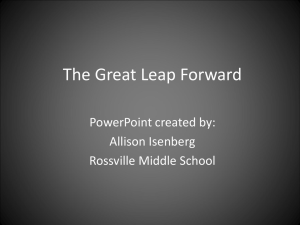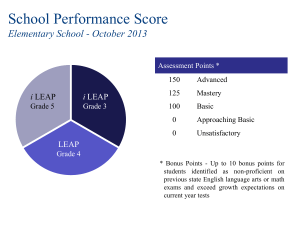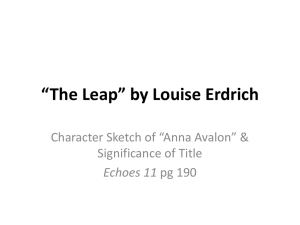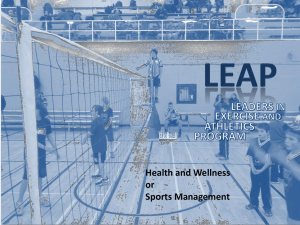LEAP PowerPoint Presentation
advertisement
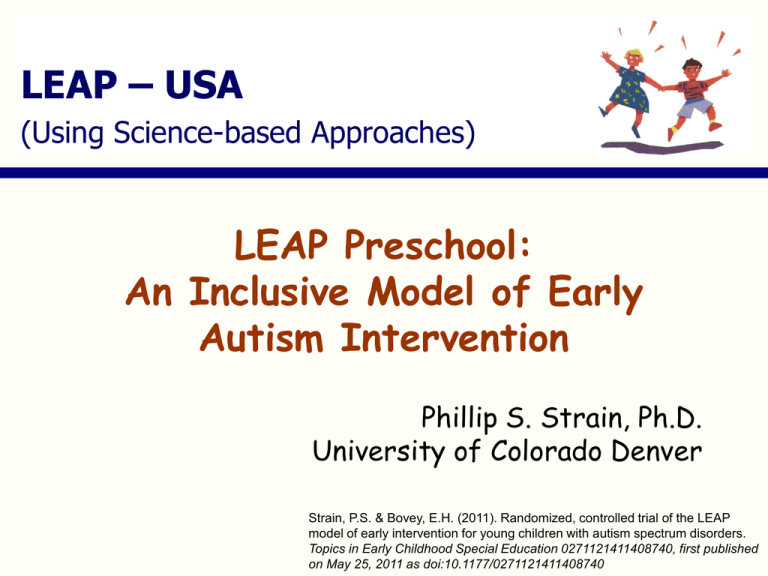
LEAP – USA (Using Science-based Approaches) LEAP Preschool: An Inclusive Model of Early Autism Intervention Phillip S. Strain, Ph.D. University of Colorado Denver Strain, P.S. & Bovey, E.H. (2011). Randomized, controlled trial of the LEAP model of early intervention for young children with autism spectrum disorders. Topics in Early Childhood Special Education 0271121411408740, first published on May 25, 2011 as doi:10.1177/0271121411408740 Key Intervention Components • Teaching typically-developing peers to facilitate the social and language skills of children with autism • Functional goals and objectives determined largely by family requests • Embedding ongoing learning opportunities into typical preschool routines LEAP – USA Using Science-based Approaches Key Intervention Components, cont • Transdisciplinary model of service delivery • Ongoing, daily data collection used to drive intervention • Using a broad array of evidence-based practices (PECS, PRT, Errorless Learning, Incidental Teaching, Peer-Mediated Intervention) • Structured parent skill training curriculum LEAP – USA Using Science-based Approaches Top 12 Findings from LEAP Research 1. Day-one intervention effects on peermediated social skills. 2. With two years of intervention about 50% of target children engage in positive interactions at levels equivalent to typical peers. 3. Social effects last up to 6 years post intervention. 4. Inclusion, proximity, modeling isn’t sufficient LEAP – USA Using Science-based Approaches Top 12 Findings, cont 5. Typical children are not harmed. In fact, they turn-out to be more socially competent than age cohorts. 6. No correlation between severity and outcome. 7. After two years vast majority of children do not reach diagnostic threshold on CARS 8. Family participation reduces depression and stress. LEAP – USA Using Science-based Approaches Top 12 Findings, cont 9. Family skill training results in changes in child appropriate behavior and compliance. 10. Preschoolers in year two can learn to selfmonitor and self-reinforce classroom behavior. 11. Children make, on average, one to two months developmental progress per month enrolled. 12. Sustainability of outcomes is closely linked to quality of contemporaneous environment. LEAP – USA Using Science-based Approaches Ratio Makes a Difference • Problems with 50:50 – – – – Commonality in daily lessons “Missing” data Proximity among children with ASD Increasing reinforcement for typical children Ratio Makes a Difference • Benefits with 3:1 – Generalization opportunities increased – Minimized “contagion effect” around problem behavior – Typical peers always have developmental matches in natural groupings Zone Defense Is The Best Defense When Adults Are So Organized and Have Explicit Schedules and Responsibilities Then: • Materials are ready to go when children arrive at an activity • Maximizes generalization opportunities (across instructional agents) • Large group time and monitoring strategies – – – Cueing “teacher” Reinforcing engagement Interrupting and redirecting “Active” Engagement Is Key Rethinking Story Time and the “Dead Person” Video Clip 1 – The Mitten Keeping To A Routine Is Insufficient Routine For Many Routine = Redundancy Routine = Restricted Stimuli Routines within Routines (Circle Example) Circle Time Routine Opening Song 1.Child passes out prop 2.Sing song 3.Child collects prop Video Clip 2 - Opening Song Hours of 1:1 Instruction = Good Outcomes • An Alternative Formula to Consider: Opportunities to respond x Functionality of opportunities x Fidelity of intervention x Breadth of impact on child’s entire ecology x Attention to generalization x Social validity of outcomes = Good Outcomes
